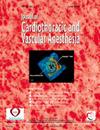2024 Clinical Update in Liver Transplantation
IF 2.3
4区 医学
Q2 ANESTHESIOLOGY
Journal of cardiothoracic and vascular anesthesia
Pub Date : 2025-02-26
DOI:10.1053/j.jvca.2025.02.032
引用次数: 0
Abstract
In this review, the authors highlight recent advances in the care of liver transplantation patients important to anesthesiologists. The number of liver transplants continues to increase annually, and the challenges of managing complex patients require knowledge of the unique pathophysiology of end-stage liver disease. Regional anesthesia, specifically fascial plane blocks, allows for improved nonopioid pain control in recipients and potentially decreases length of stay. The use of transesophageal echocardiography (TEE) in liver transplantation allows for real-time assessment of cardiac function. Diagnosing the dreaded intracardiac thrombus with TEE during liver transplantation is essential for prompt treatment. Additionally, existing structural cardiac disease may lead to left ventricular outflow obstruction and require specific treatment modalities. Again, the use of TEE is important in making this diagnosis. Combined heart-liver transplantations are complex surgical procedures. The use of mechanical circulatory support may be necessary in some cases and anesthesiologists should understand the underlying disease process to inform the use of such support. Finally, living donation for liver transplantation remains an option for directed or anonymous donation. Anesthesiologists' role in managing donors starts in the evaluation process through postoperative pain management and showcases the broad skillset of anesthesiologists.
2024年肝移植临床进展
在这篇综述中,作者强调了最近在肝移植患者护理方面的进展,这对麻醉医生很重要。肝移植的数量每年持续增加,管理复杂患者的挑战需要终末期肝病独特的病理生理学知识。区域麻醉,特别是筋膜平面阻滞,可以改善受术者的非阿片类疼痛控制,并可能缩短住院时间。在肝移植中使用经食管超声心动图(TEE)可以实时评估心功能。肝移植中TEE诊断可怕的心内血栓对于及时治疗至关重要。此外,现有的结构性心脏病可能导致左心室流出梗阻,需要特定的治疗方式。再一次,TEE的使用对于做出这种诊断很重要。心脏-肝脏联合移植是复杂的外科手术。在某些情况下,使用机械循环支持可能是必要的,麻醉师应该了解潜在的疾病过程,以便告知这种支持的使用。最后,肝移植活体捐献仍然是直接捐赠或匿名捐赠的一种选择。麻醉师在管理供体中的作用从评估过程开始,通过术后疼痛管理,并展示麻醉师的广泛技能。
本文章由计算机程序翻译,如有差异,请以英文原文为准。
求助全文
约1分钟内获得全文
求助全文
来源期刊
CiteScore
4.80
自引率
17.90%
发文量
606
审稿时长
37 days
期刊介绍:
The Journal of Cardiothoracic and Vascular Anesthesia is primarily aimed at anesthesiologists who deal with patients undergoing cardiac, thoracic or vascular surgical procedures. JCVA features a multidisciplinary approach, with contributions from cardiac, vascular and thoracic surgeons, cardiologists, and other related specialists. Emphasis is placed on rapid publication of clinically relevant material.

 求助内容:
求助内容: 应助结果提醒方式:
应助结果提醒方式:


